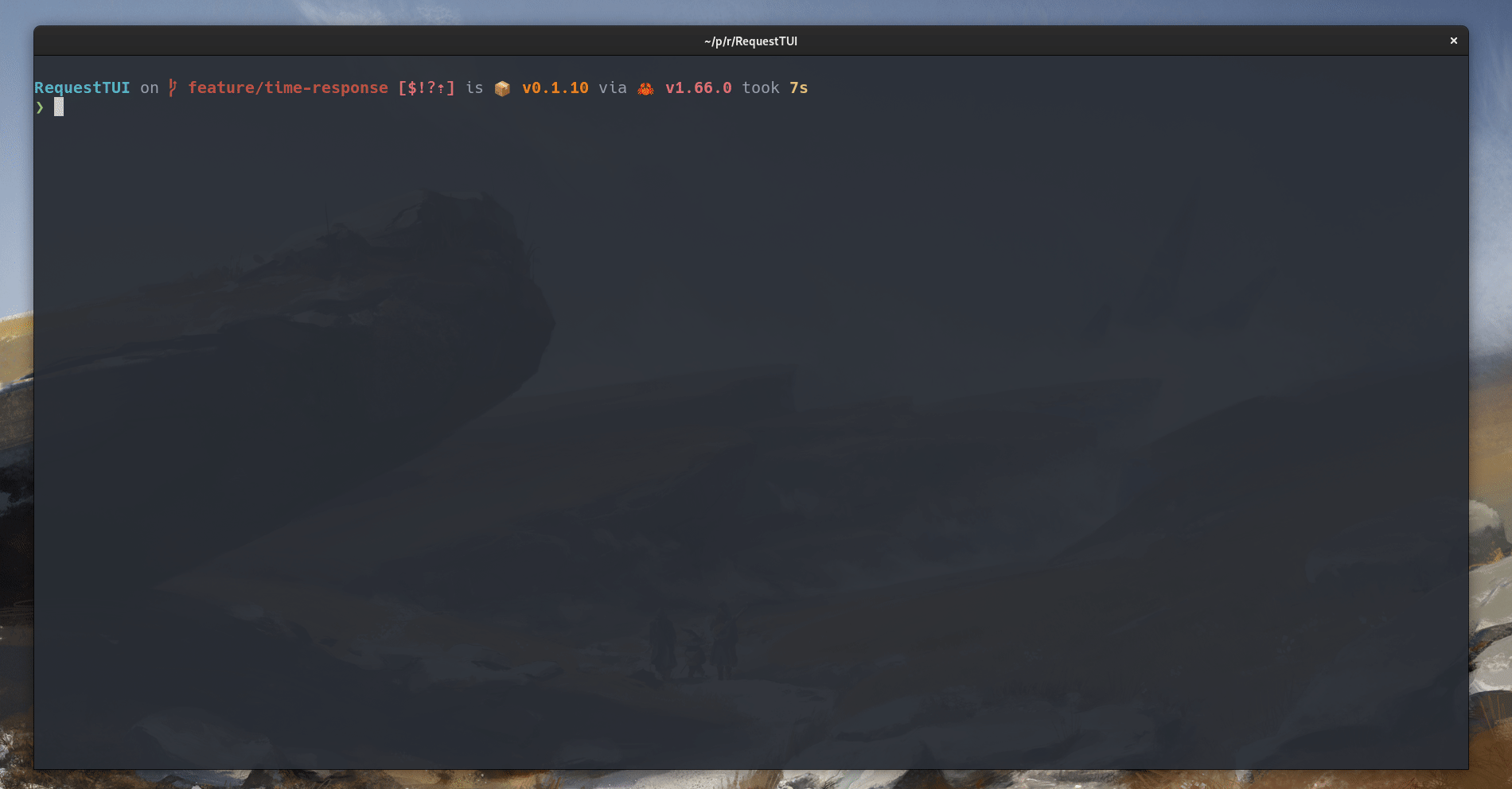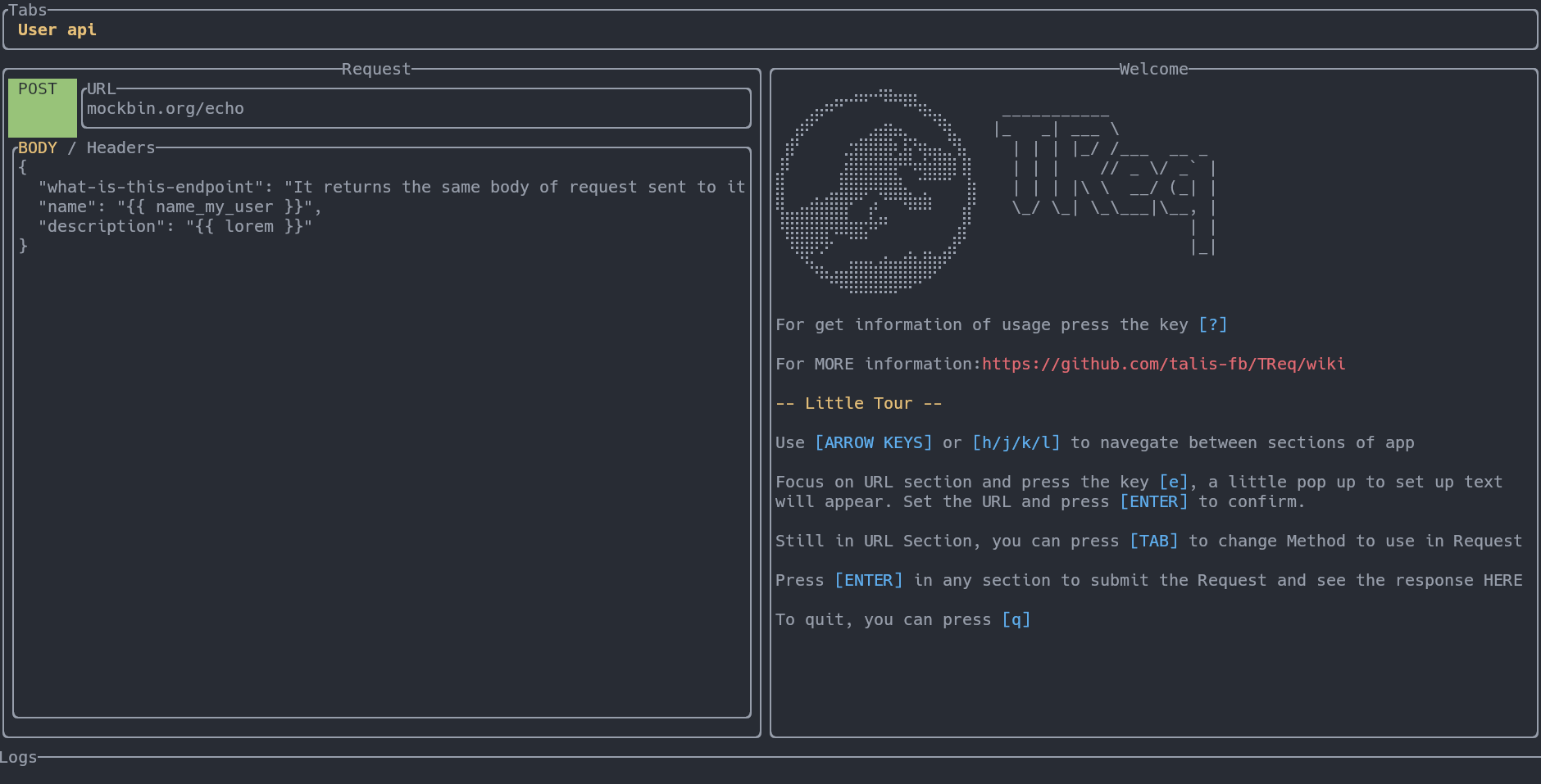Awesome
<p align="center"> <img src="./dino.png" height="120px" /> </p>TReq


TReq is a extremely tiny and fast Http/API Rest Client in Terminal. It is inspired by software like Insominia, Postman and Neovim
It integrates with your favorite text editor, letting you edit the body of request as you prefer, and quickly get the response.
<br />
Installation
Debian, Ubuntu, Linux Mint, PopOS, Zorin
It is possible to download a prebuild .deb file HERE. After downloading the .deb file, you can unpackage and install it with the command below.
$ sudo dpkg -i path_to_file.deb
Arch Linux, Manjaro
TReq is available in AUR Repository.
$ git clone https://aur.archlinux.org/treq-bin.git
$ cd treq
$ makepkg -si
Or, if you use yay just run...
$ yay -S treq-bin
Cargo
In any other environment, it is possible to download TReq with the Crates.io repository. Using this method only requires having Rust installed.
After Rust is installed, run this command to download and compile Treq:
cargo install treq
This can to take a while, due to needing to compile the project and all of its dependencies.
Setup external editor
TReq uses theEDITOR environment variable to open an external text editor when editing the Request's body or header.
TReq doesn't have a built in way to edit a Body of Requests. It delegates this work to the text editor of your choice. It is recommend you use a terminal text editor like 'vim', 'neovim', 'nano', or 'emacs'.
You can also set TREQ_EDITOR environment variable. If you want to use a specific editor with TReq. Without overwrite EDITOR value.
You can check the wiki page for a complete guide of editor setup
Usage
For a complete and simple guide how to use TReq: https://github.com/talis-fb/TReq/wiki/Usage
Using variables inside Request
It's possible to use variables inside body or header values of a request. You can check Wiki page for a complete guide of variables usage in TReq

